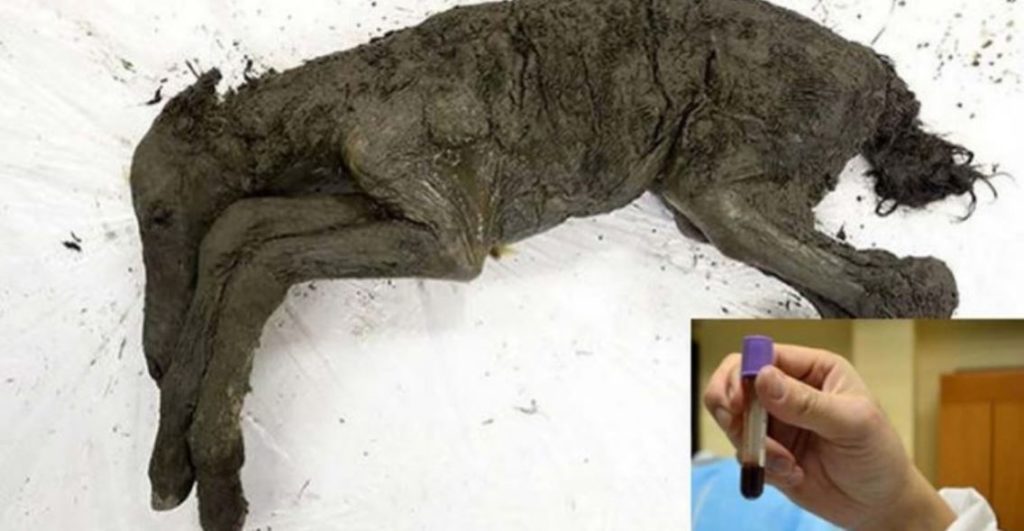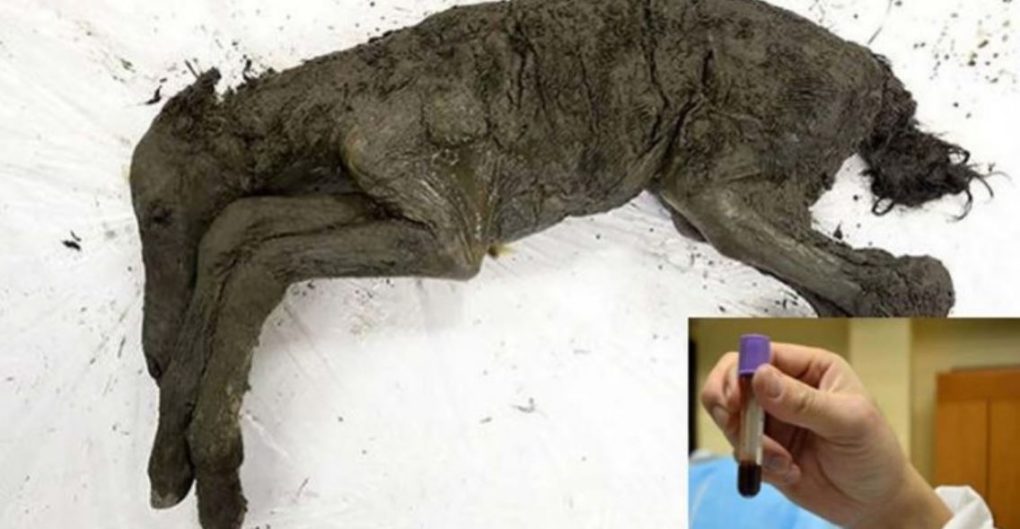Scientists Plan to Clone 42,000-Year-Old Horse Using Liquid Blood
 By Elias Marat
By Elias Marat
A team of Russian and Korean scientists in the Siberian region of Yakutsk has managed to salvage pristine samples of liquid blood from the heart of an ancient 42,000-year-old horse that was preserved in permafrost.
Their goal? To eventually gather the cells necessary to revive the extinct species back to life through cloning.
The male foal, which was discovered last August in the Batagaika depression, is a remarkably well-preserved specimen that belongs to an extinct equestrian species known as Lenskaya, or Lena Horse, according to the Siberian Times, which populated the remote corner of Russia between 30,000 to 40,000 years ago.
Widget not in any sidebars
Now a joint team from the North-Eastern Federal University in Yakutsk and the South Korean Sooam Biotech Research Foundation has begun analyzing the remains with the clearly expressed goal of cloning the Ice Age-era horse.
Semyon Grigoryev, the head of the Mammoth Museum in Yakutsk, told Russian news agency TASS that the autopsy has revealed the animal’s “beautifully preserved organs” as well as muscle tissue that has maintained a healthy “natural reddish color.” Likewise, the hair on its head, legs, and body parts is largely intact–a fantastic attribute given that “preserved hair is another scientific sensation as all previous ancient horses were found without hair,” Grigoryev remarked.
Grigoryev said:
We can now claim that this is the best preserved Ice Age animal ever found in the world.
The foal likely died of drowning early in life judging by the results of its autopsy, Grigoryev added.
“A lot of mud and silt which the foal gulped during the last seconds of its life were found inside its gastrointestinal tract,” Grigoryev said.
It remains unclear, however, if viable cells can be grown from the blood samples extracted so far.
However, another team of Russian scientists working alongside Japanese researchers have managed to spark activity in the cells of a well-preserved mammoth carcass that dates back 28,000 years ago.
Whether the material on-hand will provide the Russian-Korean team with the basis for a fully-cloned animal is another story, however. Interestingly enough, Gizmodo notes that lead collaborator Sooam Biotech has made a lucrative business for itself by cloning pet dogs as a means to “heal the broken hearts” of bereaved pet owners, and its own lead researcher was the subject of accusations that he had committed several egregious ethical violations in the 2000s.
Likewise, the ethics surrounding the possibility of cloning the ancient foal remain questionable for various reasons, such as the fact that the clone will likely enjoy the existence of a lab-rat throughout its life, without its natural wild habitat of Ice Age-era Siberian tundra and vast forests.
Nevertheless, the team is so “confident of success” that it is already “reportedly choosing a mother for the historic role of giving birth to the comeback species,” according to Siberian Times.
Whether the idea sounds wild or not, if it’s left up to the researchers in Yakutsk we could be in for a show lifted straight out of Jurassic Park.
This article was sourced from The Mind Unleashed.



